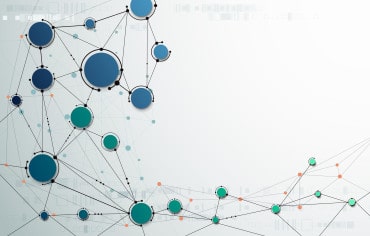
Companies are rapidly changing their throughs about bringing people back to the office. Smart offices will be a key to a fast and safe return to work.
Business leaders are rapidly changing their plans for employees to return to the office. The consensus seemed to be to de-emphasize the office and let employees continue to work from home. That would let businesses take a long-term approach to prepare their facilities to ensure a safe return to work. But hold on, businesses might need smart offices sooner than you think.
Most major global companies no longer plan to reduce their use of office space after the coronavirus pandemic, according to a survey by KPMG. In March, “just 17% of chief executives plan to cut back on offices, down from 69% in the last survey in August.”
See also: AI Bat Sensor To Monitor Social Distancing In Offices
Others have found similar sentiment. Most say a hybrid approach (where employees split their time between home and the company facility) will be the norm. According to the Washington Post,
“Citigroup chief executive Jane Fraser said in a recent memo that the majority of workers would be designated as hybrid, with an expectation that they would work at least three days in the office. Ford said on March 17 that 30,000 of its North American office workers would be allowed to work under a flexible hybrid model in which they are on-site for certain meetings or projects and stay home for independent work.”
Implications for smart offices
The bottom line is that companies that thought they had great amounts of time to prepare for employees returning to work may need to speed things up. They will have to deploy a variety of real-time systems to ensure safe conditions.
First up are systems that help a business monitor for circumstances that spread the virus and automatically react when conditions are not right.
One aspect of such systems might be an intelligent employee and visitor health monitoring application. Every person entering a building would get a temperature screening. An example is a smart thermometer system that measures an employee’s temperature before entering a building and automatically deactivates their building pass if the person is deemed a risk.
Once people are in a building, there are multiple ways smart systems can play a role. They include:
Monitoring for unsafe people densities: A system might use cameras, cell phone location data, or proximity detection to assess how many people are in a room. One use of such real-time insights might be to alert people when proper social distancing is not carried out. A more proactive system might provide visual indicators (e.g., using LED lights embedded in carpeting) to guide people away from a building’s high-density parts.
Maintain a safe environment: Smart systems that help with facilities and environmental management and critical. After a meeting ends, the room used needs a wipe down to help prevent the COVID’s spread. A smart scheduling solution might automatically alert facilities management and schedule a cleaning after a meeting breaks up.
Another aspect of maintaining healthy conditions is to ensure proper ventilation is maintained. One approach would be to have a real-time system that gauges room occupancy and, as volumes grow, throttles up fans to circulate more outside air.
Application development speed is critical
Real-time applications for smart offices and a safe return to work require great amounts of development work to build and manage. They are comprised of smart sensors and the Internet of Things devices, and data collection and analysis solutions. Any insights derived from the data must then be conveyed and shared with legacy building and facilities management systems.
Developing a smart application by integrating sensors, data, and legacy applications is time-consuming. Simply developing an app is no longer enough. Businesses must constantly update applications to incorporate new data sources, analytics routines, and new features and capabilities.
Many businesses are looking to low code technologies and composable application elements to speed such processes. Low code lets business users and citizen developers build powerful applications and improve highly skilled tech staff’s productivity by offloading lower-level development tasks. Composable applications complement those benefits by letting both types of developers reuse code that performs commonly needed tasks.
Many businesses will find that to truly enable a safe return to work, the discrete real-time applications must all work together. Other factors that help are a fully distributed architecture and having cloud and edge elements work together to create efficient applications.
All these criteria point to the need for a real-time application development platform. VANTIQ, which offers such a platform, recently transformed its headquarters into a smart office for workplace safety and health. They put together a podcast to share some pointers about lessons learned and best practices.






